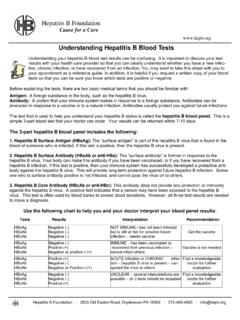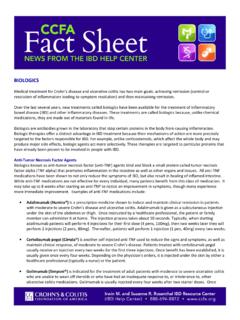Transcription of Adverse Immune Effects of Liposomes: Complement …
1 Harnessing biomaterials for Nanomedicine: Preparation, toxicity and applications Janos Szebeni & Chezy Barenholz Copyright 2009 by Pan Stanford Publishing Pte Ltd Chapter 12 Adverse Immune Effects of Liposomes: Complement Activation, Immunogenicity and Immune Suppression Janos Szebeni and Yechezkel (Chezy) Barenholz Nanomedicine Research and Education Center, Bay Zoltan Foundation for Applied Research and Semmelweis University Medical School, Budapest, and Dept of Health Sciences, Miskolc University, Hungary, and SeroScience Inc., Budapest , Laboratory of Membrane and liposome Research, Institute of Medical Research Israel Canada (IMRIC), The Hebrew University-Hadassah Medical School, Jerusalem 91120, Israel Some therapeutically relevant liposomes are recognized by the Immune system as foreign, and the resulting innate or specific Immune response can be Adverse to the host.
2 The innate response involves activation of the Complement (C) system which, via liberation of anaphylatoxins (C5a, C3a), underlies an acute hypersensitivity syndrome called C activation-related pseudoallergy (CARPA). CARPA represents a potential barrier to the clinical use of reactogenic liposomes in cardiac patients, as a main manifestation of C activation in the body is cardiopulmory distress. The Adverse Immune response to liposomes involving specific immunity is exemplified by PEGylated nano-liposome induced transient IgM production, which causes accelerated blood clearance (ABC). This chapter highlights some common and specific causes of Adverse Immune Effects of liposomes, summarizes the latest information on CARPA, the ABC phenomenon and immunosuppression by anticancer liposomes, and outlines the Immune mechanisms involved in these phenomena.
3 2 Adverse Immune Effects of Liposomes: Complement Activation, Immunogenicity and Immune Suppression 1. INTRODUCTION Today, 46 years after the discovery of liposomes [11], and nearly a quarter century after their first infusion in man [71], the Immune Effects of liposomes represents a relatively poorly explored territory within liposomology . This will, however, likely change in the near future, as the rising number of advanced drug carrier liposomes, which are complex and contain protein or other ligands, carry increased risk of Immune recognition. The absence of Adverse Immune Effects , a unique asset of simple liposomes, will probably become the exception rather than the rule.
4 Liposomal immunology will extend its present focus, the use of liposomes as vaccines, to mapping an uncharted network of hypersensitivity and immunogenicity reaction pathways. As the safety of medicinal nanoparticles comes more to the fore, reactogenicity and immunogenicity testing may join the list of toxicity assays required by regulatory agencies. A deeper insight into the fine immunomodulatory Effects of complex liposomes may also lead to a need to revise our views on Immune suppression, as is the case with DoxilTM, one of the points addressed later in this chapter. This looks like a rough way not only for future R & D of liposomes but for all nanomedicines; a toll we need to pay for nursing conventional, small-molecular medicines into the nano dimension, where the size, shape or surface features of drug particles get the attention of the Immune system (Fig.)
5 1). Fig. 1. Immune recognition of nanoparticles. Map of different nanoparticles on a diameter vs. Mw chart; blue shaded area is the region of Immune recognition. Liposomes and carbon nanotubes, with their length, fall into the sight of the Immune system, while smaller nanoparticles (fullerenes, dendrimers, micelles and complex polymeric particles ( , nanolatex) are, in theory, below the size and Mw thresholds of Immune recognition. The green Lipinsky box shows the position of traditional small-molecular weight drugs [58]. 3 2. TYPES AND FEATURES OF Immune RESPONSES TO LIPOSOMES Immune responses to liposomes can be stimulatory or inhibitory, weak, moderate or severe, all with a broad variation in their time of onset and duration (Table 1).
6 Table 1. Variations of liposome-induced Immune changes according to the time of onset and duration Type of change Time of onset Duration Example & Reference Stimulation Immediate (within seconds to minutes) Minutes to hours Hypersensitivity (infusion) reactions caused by liposomes [79-81,84] Delayed (within hours) Late (within days to months) Weeks to years Immunity to liposomal antigens, influenza or hepatitis B [3,13] Inhibition Short-term Hours to days Liposomal alendronate [22] Doxil induced immunosuppression[2,32, 74]. Long-term Days to months In additions to the above time-related differences, the Immune Effects of liposomes also differ in the part of the Immune system primarily affected, , whether the nonspecific, innate, or the specific, adaptive arm of immunity undergo overstimulation or suppression.
7 The term reactogenicity is used to imply a broad activation process that involves the innate as well as the adaptive arm of the Immune system, while immunogenicity usually refers to specific antibody induction with B and T cell responses, not necessarily involving innate immunity. Of note, antigenicity, , the capability of liposomes to carry antigens, does not necessarily mean reactogenicity or immunogenicity, as antigens may remain unrecognized or can induce Immune suppression (tolerance). The impact of liposomes on the Immune system was explored in two periods; first, in the late 1960s, the late-onset, long-lasting immunogenic properties were recognized, opening the field of liposomal vaccines.
8 Since then numerous vaccine candidates have reached advanced clinical trials, and one product, an influenza virus-like liposome expressing hepatitis B antigen ( immunopotentiating reconstituted influenza virosomes , Epaxal-Berna ), has reached the market as a vaccine against hepatitis B. The bad side of Immune stimulation, , the rise of Immune responses with Adverse consequences, has been known only since the mid-1990s, following the introduction to date of a dozen liposomal drugs [59], including Doxil [12,29,31,72]. This chapter focuses only on the latter, Adverse Immune responses to liposomes; the vaccine applications have been amply reviewed elsewhere [3-5, 13,19].
9 It was our goal to highlight the common grounds of Immune stimulation 4 Adverse Immune Effects of Liposomes: Complement Activation, Immunogenicity and Immune Suppression by liposomes, to provide examples of reactogenicity, immunogenicity and Immune suppression, and to outline recent theories about the mechanism of these phenomena. 3. GENERAL CAUSES BEHIND Immune RECOGNITION OF LIPOSOMES Among many structural features, two stand out as fundamental reasons for Immune recognition of liposomes: (1) the diameter of vesicles, roughly in the 50-200 nm range and (2) absence of cell membrane structures that normally prevent host cells from Immune recognition. As shown in Table 2, there is a remarkable overlap between the size range of many clinically used liposomes and pathogenic human viruses belonging to different viral families.
10 Table 2. Size ranges of clinically applied liposomes and human viruses Liposomal drug *Size (d, nm) Virus family *Size (d, nm) low end high end low end high end Ambisome 45 80 Adeno 70 90 Amphotec Amphocyl 115 115 Arena 50 300 DaunoXome 45 45 Calici 35 40 Doxil (Caelyx) 80 95 Corona 120 160 Epaxal 100 200 Flavi 40 60 Inflexal V 100 200 Hepadna 42 42 Herpes 100 120 Orthomyxo 80 55 Papova 45 250 Paramyxo 120 300 Pox 250 75 Reo 75 120 Retro 80 180 Rhabdo 75 70 *Low and high ends are the minimal and maximal values in the size range obtained from microbiology textbooks (viruses), and drug informations (liposomes) or other internet sources.






